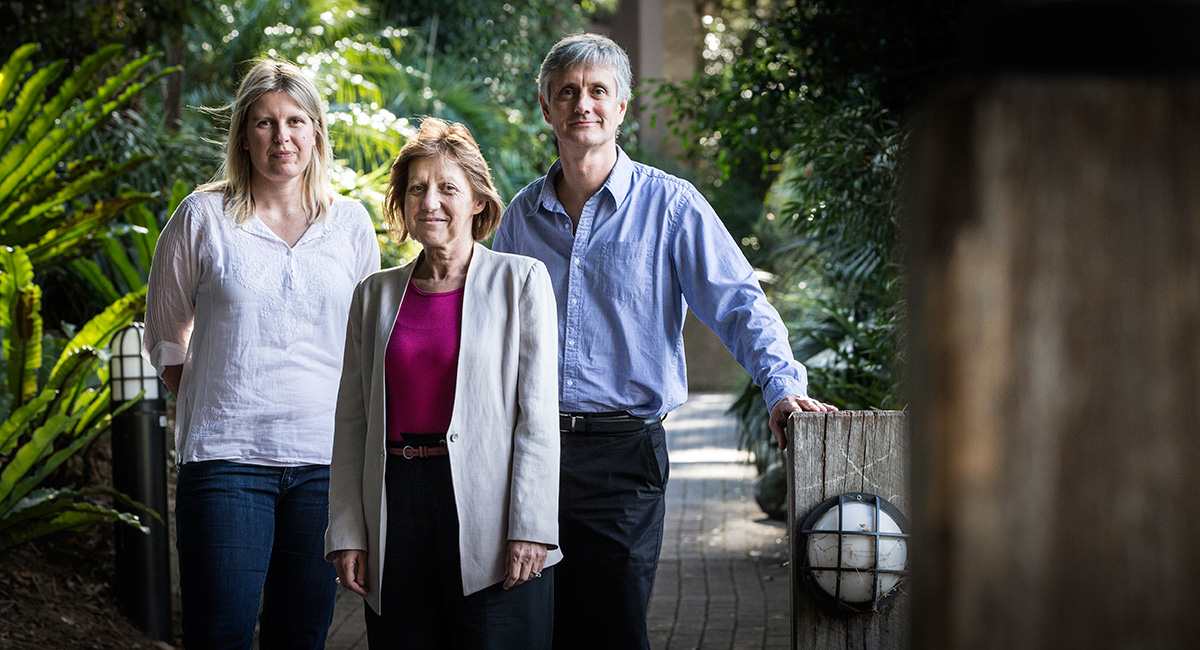June 24, 2015
Pair honoured for their research into archaeological dating
Two leading scientists have been honoured for their research in the dating of archaeological deposits.
Multinational mass media and information firm, Thomson Reuters, yesterday (23 June) presented a Citation Award to two leading scientists from the UOW's Centre for Archaeological Science (CAS).
CAS is dedicated to the development and application of modern scientific techniques to answer fundamental questions about human evolution by analysing the material remains of past human life and activities.
Distinguished Professor Richard (Bert) Roberts and Associate Professor Zenobia Jacobs received the award for their research in ‘luminescence dating of archaeological deposits’. UOW Deputy Vice-Chancellor (Research and Innovation), Professor Judy Raper, was a guest at the award ceremony held at the University of Melbourne.
Thomson Reuters recognised 11 prominent research teams and Australian innovative companies at the event. It presented an opportunity for major research and policy groups to come together to celebrate the success of Australian research.
UOW has become the centrepiece of a national centre for archaeological science after internationally renowned geochronologist Professor Roberts was named as an Australian Research Council Laureate Fellow in 2013.
The ARC Laureate Fellowship scheme is designed to attract world-class researchers to Australia and retain those already here. Together with financial and infrastructure support from UOW, it will allow Professor Roberts to develop CAS as the central hub of Australia’s first national centre for archaeological science.
Professor Roberts played a key role in the 2003 discovery and dating of the “Hobbit” – a previously unknown species of small, archaic human who lived on the Indonesian island of Flores until relatively recent times (in palaeoanthropological terms). Professor Roberts led the team of dating experts who determined that the “Hobbits” may have survived long enough to encounter early members of our species as they spread through Southeast Asia to Australia.
Human evolution in Southeast Asia will continue to play a key role in Professor Roberts’ new Laureate Fellowship project, project, called ‘Out of Asia’ which involves the development and application of frontier technologies in archaeological science.
Fellow citation recipient, Professor Jacobs, is the Head of the School of Earth and Environmental Sciences. A love for natural history runs deep in Professor Jacobs, who was born and bred in South Africa in a town at the gateway to Kruger National Park, a wilderness area of almost 2 million hectares that is famous for its wildlife.
Professor Jacobs is an award-winning geochronologist who has focussed on the evolution of early modern humans in Africa, where our species first originated about 200,000 years ago and Neanderthals in Europe.
As a pioneering geochronologist, she has led the development of a dating technique known as single-grain optically stimulated luminescence (OSL), which measures the length of time that individual grains of sand have been hidden from sunlight in archaeological deposits, enabling the accurate ages to be determined for artefacts and fossils.
She was recently a member of an international team that reported the first clear evidence of Neanderthals independently developing a new technology that was later adopted by modern humans. She debunked the long-held view that Neanderthals were out-witted by our ancestors to the point of extinction.
Professor Jacobs’ research has added considerably to our knowledge of human prehistory and her single-grain OSL technique has been widely adopted by luminescence dating laboratories around the world.
